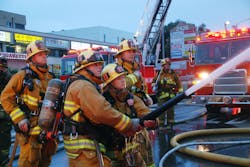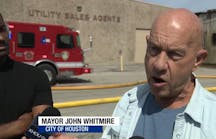Leading in the 21st Century: Challenges Presented by Hierarchy, Generational Difference Culture
When I first became a firefighter in 1985, I thought I had a clear understanding of leadership. I had been in the Army, so I understood the hierarchical leadership model that I found within the fire service. I knew there were the people in charge and there were the people like me, the ones who did the work. Period. I realize today how much I didn’t know about leadership back then. Leadership does not have to be so complicated; sometimes it is as simple as just doing the right thing. Unfortunately, the hierarchical structure embraced by most fire departments—although a necessity on the fireground—can stifle up-and-coming leaders with burdensome chain-of-command filters, and potentially have an adverse impact on an organization. Moreover, the perception of doing the right thing by some is the complete opposite of doing the right thing by others, and often those differences of opinion follow generational lines within a fire department.
Balancing act
Leading in the 21st century requires a good balancing act. Whether you work in a large metropolitan fire department or are part of a small volunteer organization, your ability to keep new members engaged can often feel as though you are unlearning everything many of us have learned over the last several decades. The organizational structures with which many of us are familiar certainly have their place. Hierarchical structures, structured reporting models and chains of command exist throughout all military and paramilitary organizations, as well as in most of government agencies. These models work well when operating on the fireground, when dealing with disciplinary issues or when addressing issues that can—and often certainly should—be managed at the lowest supervisory level. The question I wrestle with in relation to the existing model is this: How can we ensure that creativity and innovation are still encouraged among all ranks within the fire service and not discouraged because of culture or tradition?
Many of the top companies in the United States are successful not only because they are innovative but also because they allow a free flow of communication across the company. If an employee sees a CEO walking down the hallway and wants to express an idea regarding a better way to do business, that is not only OK, it is encouraged. Lead agencies recognize that some of the best and most forward-thinking ideas are often brought forward by the younger generation in their workforce. Could this be because they have not been weighted down by the motto “that’s just the way we do it around here”? Coming up through the ranks, I have personally experienced this and have been told by junior members of the department that many ideas were never allowed to go forward because those members were told, “That will never work here, and you need to stop thinking that way.” An idea may or may not work, but if we simply dismiss ideas because someone believes the current way of doing business is the only way to do business, we will fail to encourage new ideas that may change our organizations for the better and improve the way we do things.
There are multiple generations that exist in the workplace: Traditionalists, Baby Boomers, Generation X and Millennials. Soon many of the remaining Traditionalists will retire and the new Homeland Generation (aka Generation Z) will be applying for jobs. Each generation has its own priorities and viewpoints, and before the substantial changes caused by social media and immediate access to information, those varying viewpoints were somewhat cyclical. Today, researchers are not quite certain how the newest generation will behave and can only speculate about potential views/behaviors. One thing is clear, though: The next generation will be entering your department soon. I am not going to dwell on the differences between the generational groups, but it is those differences that not only shape each generation but often also lead to job dissatisfaction among younger employees and friction among members of different generations.
As already established, hierarchical and paramilitary structures provide a balanced structure when working on the fireground, at various emergency scenes and in selected administrative procedures in an organization. When time matters, we do not have the luxury of taking a vote before acting or sitting on a committee to evaluate all the potential pros and cons of a decision. A significant number of our decisions must be made in the most taxing of circumstances—time-compressed, middle-of-the-night and with limited information. That is the basis of why organizations have policies, procedures, rules and guidelines to which we adhere in most of what we do, whether it is during an emergency response or just in our daily activities. These structures are good and should be followed to remain safe and have consistent practices. There is absolutely no reason why our actions on the fireground should be a mystery to anyone who works for us or with us.
In addition to these written processes, we must also train our officers and acting officers to not only know and understand those policies, procedures, rules and guidelines, but also to know how to apply them to the current circumstances they are managing. There are times when these written processes do not provide all the answers; thus, the training and career development of your officers is instrumental to doing the right thing so that everyone goes home safely at the end of their shift.
We also know that the paramilitary structures used by most fire departments across the nation are built on a military-structured reporting model. Even though that is the case, it does not mean that a fire department’s paramilitary structure has to restrict all communications through the chain of command and determine the communications policies of the individual department.
What I have found interesting in reading about the topic of leadership is the way many military leaders are engaging ALL members within their chain of command. In his book “Team of Teams,” General Stanley A. McChrystal overviews a move to a more networked structure of leadership, allowing enhanced sharing of information on which to make critical decisions and take appropriate action. General McChrystal implemented this model in Afghanistan to allow U.S. military forces to be more dynamic and fluid in dealing with an enemy that used non-traditional military tactics.
This model already exists in the fire service. It is called crew resource management (CRM). CRM was modeled after the airline industry, which uses a system based on the philosophy that information-sharing is critical to the success of a flight crew managing an in-flight emergency. As it relates to fire operations, CRM encourages any firefighter who sees a risk or something of concern to identify it and advise his or her company officer. CRM in the fire service has been around for several years and is taught by and used in many fire departments. Unfortunately, I have not seen this model used as often as it should. There is still a pervasive belief in far too many departments that a younger member of a department does not have the right to express an opinion. I have observed far too many young firefighters who are slighted, talked down to and discouraged from bringing forward any idea, whether it is as simple as a suggestion about improving routine maintenance around a fire station or when identifying a potential risk on the fireground. This attitude must change.
Networked organizations allow a free exchange of ideas and encourage people—regardless of rank, tenure in the organization or position—to openly discuss different ideas across all levels within the organization. By allowing this exchange, organizations are constantly challenging themselves to be better, to grow and learn, and that by communicating across the ranks, there is true value and ownership for all members of the organization, not just the few who sit at the highest levels.
Implementation of this model is not an easy task. As previously noted, the use of a paramilitary structure has its place during emergency operations and administrative tasks. Allowing an employee to simply share an idea with anyone in the organization provides the open dialogue necessary to engage the incoming generation within the fire service and helps them to feel valued and connected to the department. The old days of shunning people for thinking outside of the box or having a differing opinion about how a mission or practice can be accomplished needs to go away. Although firehouse/fire service culture and tradition have their place, we need to provide an environment where ideas can and should be shared. This is essential to growth in the world we live and work in today.
Takeaways
A person should not have to go through multiple levels or filters just to express an opinion or idea. Although I routinely meet with people in my department who want to share ideas with me, I have received some of the most inspirational ideas when I left my office and visited members at their stations. I’m not suggesting that we do away with our chain-of-command model in all instances. If an issue being brought forward is something that should be managed by a member’s immediate supervisor, ask the member to bring it forward through the chain-of-command model, and explain why it is necessary to give the member’s supervisor an opportunity to correct the issue. On the other hand, if a member is simply bringing forward an idea about how to improve something within the organization, listen to the idea and move it forward to see where it will go. The ideas brought forward during informal conversations have led to some of the most innovative concepts developed in the fire service.






